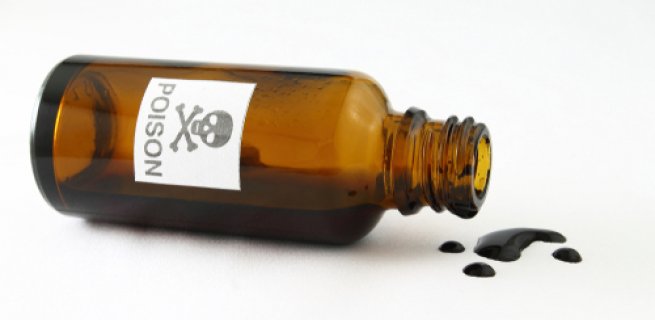By Paul Gregoire and Ugur Nedim
At the age of 28, George Dean was the captain of the Possum: a night ferry that ran between Circular Quay and Milsons Point. Born in the NSW town of Albury, Dean was well-respected in the public eye, as he’d saved several passengers from drowning in the harbour.
The captain was married to Mary Seymour, who’d given birth to their daughter on Boxing Day 1894. However, on 8 March the following year – the couples’ first wedding anniversary – Mr Dean was arrested and charged with the attempted murder of his wife.
It was alleged that Dean had been administering poison – arsenic and strychnine – to his wife, mixed in lemon syrup, cups of tea and medicine. The accused stood trial in the NSW Supreme Court in April that year, with criminal lawyer Richard Meagher acting in his defence.
Mrs Dean told the court that their relationship had deteriorated soon after they were married, and she’d experienced the symptoms of poisoning prior to giving birth to her baby, while George denied the accusation, but admitted his dislike for his mother-in-law had put a strain on the marriage.
Saved from the hangman
Mr Dean was tried in the Supreme Court and found guilty of attempted murder. On 6 April, Justice Sir William Windeyer – “the hanging judge” – sentenced the ferry captain to the maximum penalty of the day, which was death.
Dean’s sentence was commuted to life imprisonment though, due to his youth and, as the justice put it, “humane and gallant efforts in saving human life by rescuing drowning people at some risk to his own”.
For a person to be convicted of the crime of attempted murder a number of elements must be proven beyond reasonable doubt. It needs to be shown the accused perpetrated an act with the intention of killing someone, but for reasons beyond their control the victim didn’t die.
But, the outcome of the “lemon syrup case” caused a scandal. Protest meetings were held and petitions were circulated supporting claims that Dean was innocent. Meagher criticised Justice Windeyer’s judgement in parliament and accused Mary and her convict mother of conspiracy.
Torture and attempted drowning
These days, the penalties for attempted murder aren’t as harsh they were back in the late nineteenth century. For four youths who were arrested and charged with the attempted murder of a 19-year-old woman with disabilities last September, the death penalty no longer applies.
Then 22-year-old Matthew Leuthwaite, his ex-partner Brooke Brown, who was 19 at the time, and a 17-year-old girl and 16-year-old boy are accused of kidnapping and throwing Kayla Kendrigan off the Windsor Bridge into the Hawkesbury River at 5 am on 27 September.
It’s alleged the four youths pushed Ms Kendrigan into a boot of a car and drove her to a house in Whalan, where they tied her to a chair and tortured her. As the victim was born without a lower left arm, police allege throwing her into the river was meant to lead to her demise.
Modern day offences
Today, in a case like the attempted drowning of Kayla Kendrigan, those found guilty of such a crime face a maximum penalty of up to 25 years. Part 3 division 3 of the Crimes Act 1914 (NSW) (the Act) contains four separate offences relating to attempted murder.
Section 27 of the Act is the offence George Dean would have been charged with at present. It covers acts done to a person with the intent to kill them, including administering poison, or any other destructive thing, or means of wounding or causing grievous bodily harm.
Acts done to property with intent to murder falls under section 28 of the Act. This covers setting fire to something, casting away a vessel, destroying something with gunpowder or another explosive substance, and throwing something over or removing a sleeper from a railway line.
Certain other attempts at murder are covered in section 29. This section again contains provisions around poisoning, as well as shooting, suffocating, strangling, or, as in the case of Ms Kendrigan, attempting to drown a person.
And section 30 of the Act makes any other means of unsuccessfully trying to kill a person not covered in sections 27 to 29 a crime. It stipulates that an individual attempting to commit murder is “liable to imprisonment for 25 years”: the same penalty that applies to the other three sections.
Based on objective factors
A standard non-parole period (SNPP) of 10 years applies to all four forms of attempted murder. An SNPP is a reference point for the sentencing judge when determining the minimum time a person must spend behind bars before being eligible to apply for release on parole.
Section 54A of the Crimes (Sentencing Procedure) Act 1999 outlines that an SNPP represents a non-parole period for certain offences that, “taking into account only the objective factors affecting the relative seriousness of that offence, is in the middle of the range of seriousness.”
The truth rises
As for the public outcry over the innocence of George Dean, a Royal Commission was established in May 1895, with Francis Rogers QC and two doctors appointed to investigate whether he should remain in prison. And on 28 June, Dean was released, and he returned to work on the ferries.
But, on 18 July, criminal defence lawyer Richard Meagher told former NSW Chief Justice Sir Julian Salomons that he’d tricked his client into admitting his guilt back in April, and he hadn’t mentioned the confession as he thought it was a matter of lawyer-client privilege.
Salomons then notified the attorney general about the confession. On 25 September, the attorney general informed the NSW Legislative Council about it. And R B Smith, a North Shore chemist, came forth on 4 October and said he’d sold the poison to Mr Dean.
Dean was arrested five days after the chemist revealed his source. He was subsequently convicted of committing perjury and sentenced to 14 years imprisonment. After his release in 1904, he spent close to another decade working on the ferries.












It is not mentioned in this fascinating account, but presumably it is also an element of attempted murder that the act or omission which was intended to cause the death of the purported victim was actually capable of causing death or grievous bodily harm to the purported victim.
Sticking pins into voodoo dolls, with the intention of inducing unnatural death, could hardly be the basis on which a charge of attempted murder would be brought.
If someone, say, an Agripina or Lucretia, fed someone mushrooms they believed to be poisonous, intending to cause that oerson’s demise, but it turned out that they were not poisonous mushrooms at all, they are surely not guilty of attempted murder. Should the intended victim, nevertheless, actually die, perhaps from an allergic reaction to otherwise harmless fungi, would our misinformed and ineffective intended poisoner then be guilty of murder?
Yes – because he had ‘intent’. The offence of murder HAPPENED which was his intent. It was premeditated.